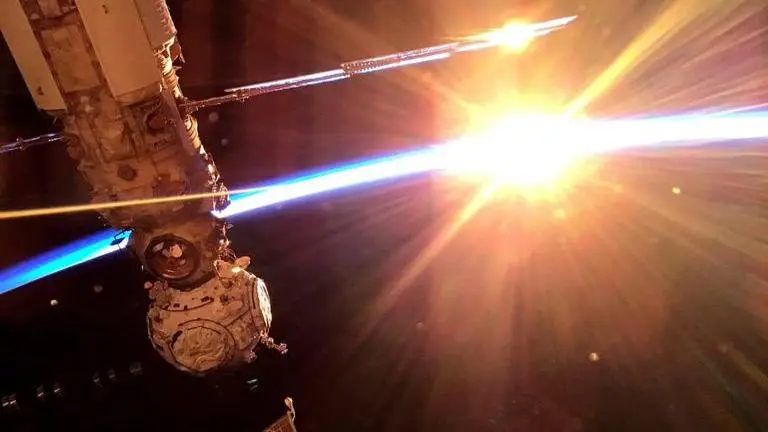Updated 16 July 2022 at 15:09 IST
Russia to launch nuclear-powered 'Space Tug' to deliver interstellar space stations
Roscosmos announced its plans to launch an unmanned nuclear-powered space tug to deliver interstellar space stations to the planets in the solar system.
- World News
- 3 min read

Russian space agency Roscosmos on Friday announced its ambitious plans to launch an unmanned nuclear-powered space tug in a bid to deliver an interstellar space station to the planets in the solar system. According to the Russian state-run outlet, TASS, the mission, including the launch of the space tug 'Zeus', is slated for 2030 and will last for about 50 months, i.e. about 4 years. Roscosmos is currently evaluating the plausible calculations of the mission called Transport and Energy Module (TEM), said Roscosmos executive director for long-term programmes and science, Alexander Blosheko.
"Together with the Russian Academy of Sciences, we are now making calculations about this flight's ballistics and payload," he added, as quoted by TASS. Reportedly, the space tug will also be carrying an interstellar space station to the planet of the Solar system. However, Roscosmos former chief Dmitry Rogozin told Sputnik that the cosmonauts to the space station will be departed separately due to the elongated time duration of the space tug.
"We are currently discussing the expediency of delivering a crew to the point where the tug arrives whole using conventional chemical energies on a superheavy-class rocket. Thus, people would not have to suffer while flying one way for a year aboard this space tug," Rogozin explained.
What is a space tug?
The idea of a space tug was floated by Roscosmos for over a decade now. The idea is TEM, informally known as 'Space Tug', is based on the concept of "marriage between nuclear reactor with an electric rocket engine," Russian Space Web explained. The TEM, named Zeus, is expected to have military components, according to pictures released by KB Arsenal in 2020. What Russia described to be a "formidable" project is still on hold due to the development of nuclear reactors that would replace bulky solar panels with nuclear power sources to provide plenty of electricity for years (if not decades) to the Zeus.
"The heart of the TEM tug is a nuclear reactor, which generates heat. The heat is then converted into electrical power either through a mechanical turbine or via the so-called thermal emission method, which does not involve any moving parts. Though less effective than a turbine, the simpler, and more familiar to the Russian industry, thermo-emission conversion appeared to be in use aboard the TEM vehicle revealed in 2020," Russian Space Web elucidated.
The state-of-the-art space tug, which is in development since 2010, is expected to be completed by July 2024. The cost, as estimated by Sputnik, is said to be about $56.3 million. If things go as planned, the mission will be launched in 2030.
Advertisement
NASA says US to resume ISS flights with Roscosmos
On July 15, the National Aeronautics and Space Administration (NASA) announced that it will resume spaceflights to International Space Station (ISS), including sending integrated crews in Russian Soyuz. "Five space agencies (the Canadian Space Agency, the European Space Agency, the Japan Aerospace Exploration Agency, NASA, and Roscosmos) operate the station, with each space agency responsible for managing and controlling the hardware it provides. The station was designed to be interdependent and relies on contributions from each space agency to function. No one agency has the capability to function independent of the others," NASA said in a press release. The first such mission is expected to take place in September this year after Roscosmos said it will suspend cooperation on the ISS with the West after facing crippling sanctions over Moscow's war in Ukraine.
(Image: @AntonShkaplerov/Twitter (representative)
Published By : Dipaneeta Das
Published On: 16 July 2022 at 15:09 IST
